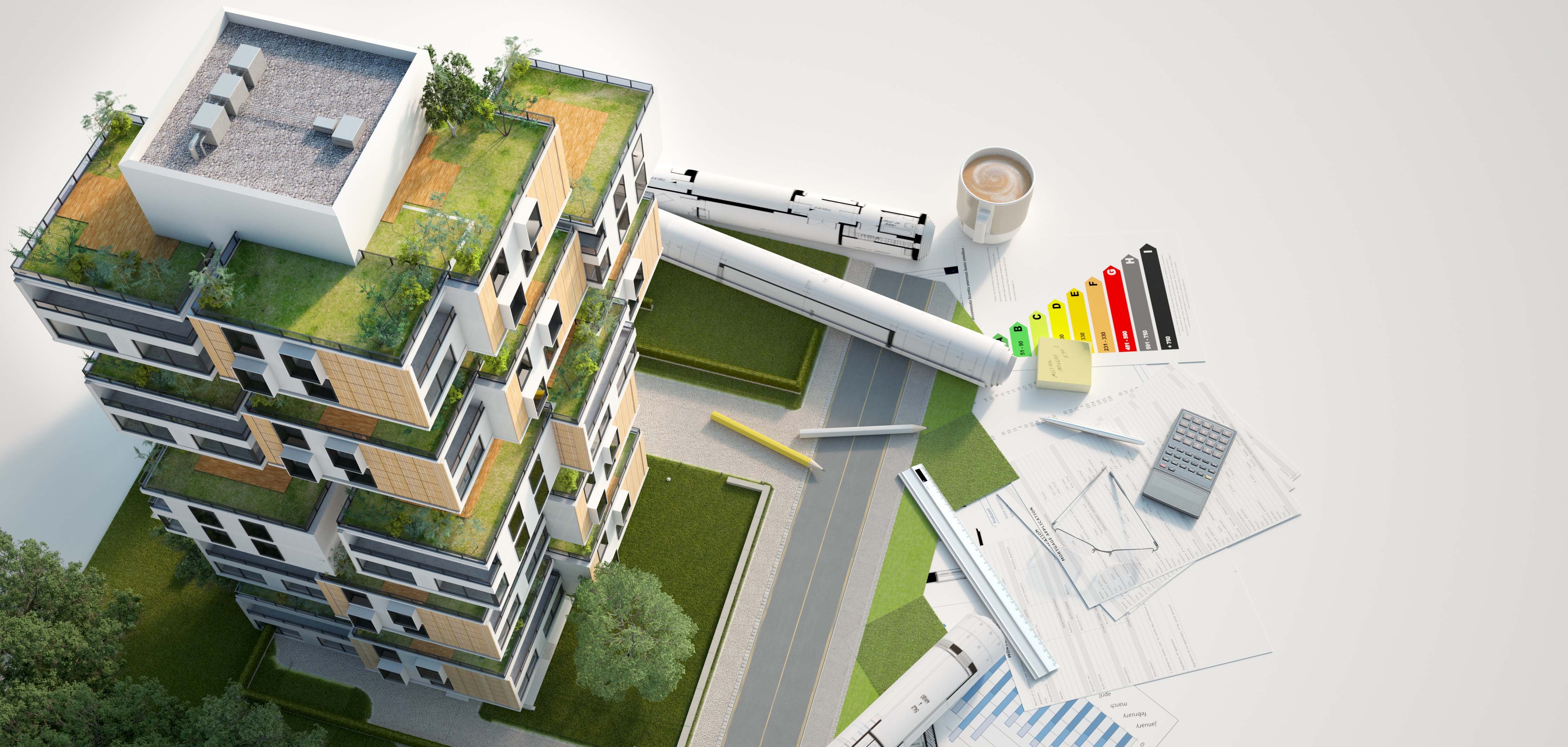Enhancing opportunities for green development
Green buildings are crucial for balancing population growth and environmental sustainability. Find out how three tech offers make buildings smarter and more sustainable.
Our built environment—made up of housing, office buildings, energy networks and more—has a colossal carbon footprint. According to a 2019 International Energy Agency report, the buildings and construction sector accounts for over one-third of global carbon dioxide emissions alone. With 68 percent of the global population expected to live in urban areas by 2050, up from 55 percent in 2018, it becomes ever more crucial to design and construct sustainable cities.
Green buildings play an essential role in achieving that goal. They help reduce energy consumption, promote efficient resource utilisation and create comfortable spaces for occupants. As the world faces rapid urbanisation and the impacts of climate change, green buildings can help cities adapt and thrive in an ever-changing environment.
Understanding buildings inside out
Most conventional buildings do not leverage the use of data-driven tools that enable owners and managers to monitor and assess key environmental factors like temperature, air quality and occupancy rates. This can increase the carbon footprint of buildings due to the inefficient use of resources.
To address this issue, innovators have developed an analytics and insights software platform that collects data from various sources, including IoT-powered occupancy and air quality sensors. The platform’s agile, hardware-agnostic algorithms process this data to provide valuable insights for building management—helping organisations make informed decisions that can improve building efficiency and reduce wastage.
Highly deployable in a variety of settings, the platform monitors indoor air quality, assesses space utilisation, optimises energy reduction and evaluates real-time occupancy. This not only enables organisations to identify cost-saving opportunities but also fosters a more conducive work environment for employees in the building.
Getting a grip on energy usage
While modern buildings are equipped with control systems, most of them are only programmed to target one parameter at a time, such as temperature or humidity. Such systems are also typically reactive—they can only provide an output based on previously obtained information—making it inefficient to regulate dynamic environments.
To overcome this limitation, a state-of-the-art predictive-control solution developed in Singapore employs a building model that simultaneously monitors, predicts and optimises various building service systems more efficiently. From air conditioning and ventilation to lighting and shading, the technology maximises occupant comfort with its machine-learning-based algorithm that captures building dynamics to provide real-time integrated building control.
From shopping malls to university campuses, this solution can potentially be implemented in a wide range of spaces with centralised building management systems. With its capability to provide smart energy management, building owners that adopt this technology could potentially save a significant amount of their energy bills while enhancing the comfort of occupants.
Fresher air without electricity
Another way to improve occupant comfort is by improving the indoor air quality. Urban areas often experience higher levels of air pollution—making it important to monitor and address indoor air quality in densely populated regions.
To tackle indoor air pollution, an eco-friendly building material has been developed that does not require any electricity to operate. The material’s unique surface, littered with micropores, facilitates functions like purifying harmful substances, regulating indoor humidity and preventing the spread of debris—all without relying on energy. This versatile and easy-to-use material is suitable for a wide range of building types, from homes and hotels to schools and stadiums.
To find out more about green building technologies and other innovations, contact us at [email protected].

